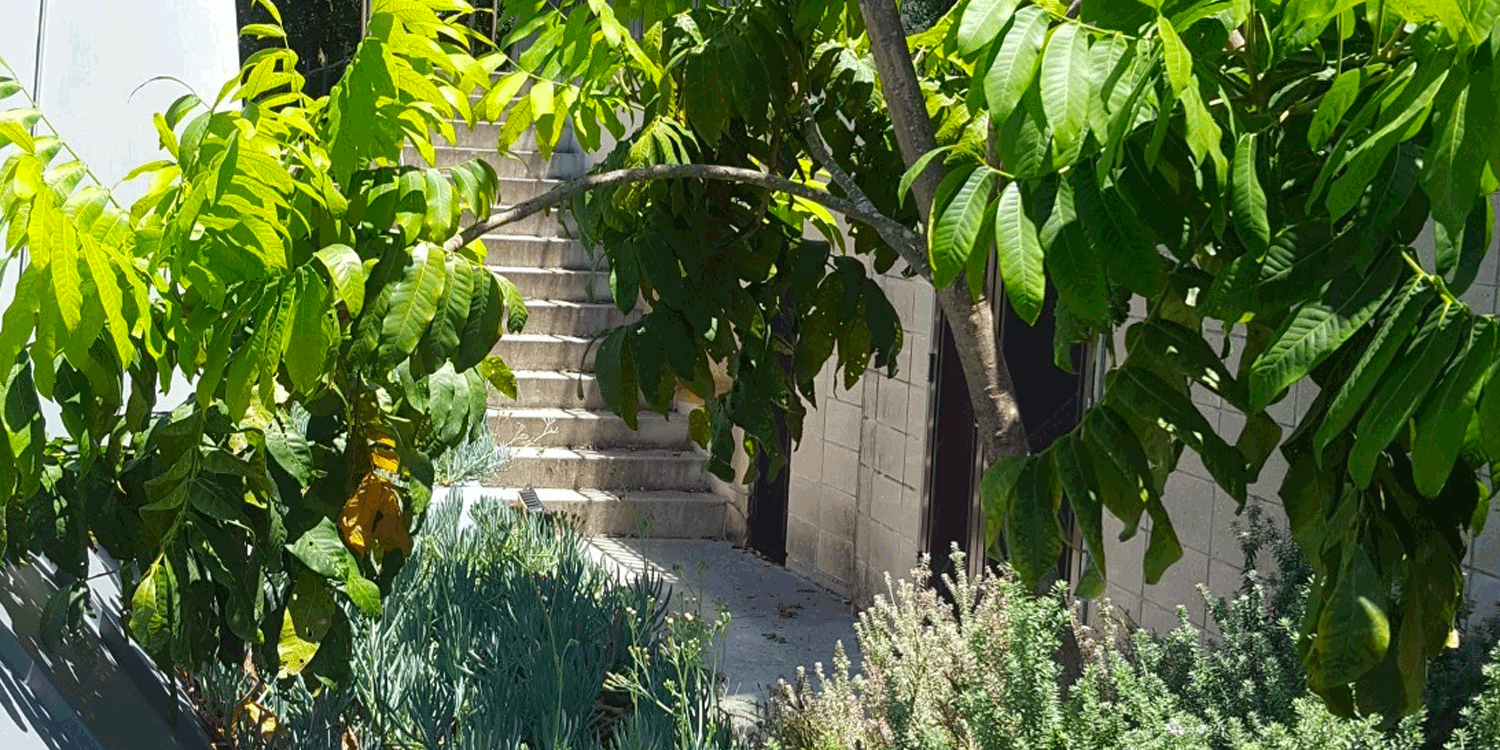
01 Mar Sanctuary Magazine. Gardening up High

Gardening up high. Roof top landscapes
I was asked to put an article on Green Roofs together for Sanctuary Magazine.
Here is the published piece that gives tips for soil depth and volumes as well as plant species that are suitable.
Elke Gardening Up High article_Sanctuary Magazine
http://www.sanctuarymagazine.org.au/
Published: May 2017
We’re learning more all the time about what plants can thrive, and survive, on rooftops. Elke Haege shares the latest research on your best soil and plant options for living roofs.
To survive the harsh conditions of rooftop landscapes, certain plants have special adaptations, but it is also critical we provide plants with the right soil and water conditions.
Success or failure with a rooftop garden will most likely come down to your choice of soil and the availability of water. Evapotranspiration (water loss) of plants on windy, sunny rooftops can quickly dry plants out. Soil acts as a buffer and rooftop irrigation is essential.
IRRIGATION
I recommend drip (under the surface) irrigation so that the water penetrates down into the soil and encourages deeper rooting by plants. As an aside: consider collecting rainwater that falls on other sections of your rooftop for irrigation – is there space on your rooftop for a water tank? [Bearing in mind the structural support needed for a full tank.]
Soil volume
The right soil and soil depth will give you a successful landscape (more plant growth, healthier plants, less disease, less plant death, more resilience and tastier produce). This is because plant roots use soil to breathe air, take up water and anchor themselves. A larger volume of the soil provides the nutrients and minerals your plants can tap into which is vitally important on a harsh, windy rooftop.
Soil type
For rooftop soils you need to consider the topsoil as well as the subsoil (the next layer down). For topsoil, specify E1 (rooftop ‘A’ Horizon) and for subsoil specify E2 (rooftop ‘B’ Horizon). Reputable soil supply companies will be able to supply you with these soil types. Make sure you ask for a certificate or letter stating that what is going to be supplied to you meets these specifications. Check that the soil weight meets the parameters of your rooftop. Compliant E1 and E2 soil media are <2400kg/m3 (2.4kg/L) saturated density (for more detail on this, see Soils for Landscape Development, published by CSIRO).
Soil depth
A good rule of thumb for soil depth on rooftops is to have 300mm as the E1 (‘A’ Horizon) and 300mm minimum as the E2 (‘B’ Horizon) for groundcovers and small shrubs. For screen planting, increase the ‘B’ Horizon to 500mm. For small-medium tree planting, increase the ‘B’ Horizon to 800mm to give 1.1 m total depth.
Tree anchors
Where taller trees or windy sites are involved, tree anchors may be necessary, it is however important not to penetrate the waterproofing layer when installing these.
Mulch
Mulch helps prevent soil from drying out and provides nutrients as it slowly breaks down. One thing to consider is the amount of wind on your rooftop and if this will send lightweight mulch over the edge. If this is the case, consider larger diameter mulch, such as pine bark. Whichever mulch, make sure it complies with Australian Standard AS4454.
Fertilising
Given the potentially limited soil volume and the fact your plants don’t have natural ground from which to draw trace elements and other nutrients, fertilising is important. Slow release fertiliser with a supplementary liquid fertiliser in spring through to autumn will assist. I have a worm farm on my rooftop and am able to liquid fertilise regularly as well as use the castings and reduce my degradable waste. You may also need to top up the soil yearly due to slumping.
Shade plants, trees and screen plants (shepherding)
Screen plants or larger plants can help protect and shade smaller plants, like a windbreak in a paddock. Consider: sacred bamboo, lilly pilly, grevillea, citrus trees, kunzea, banksia, dwarf magnolias and dwarf eucalypts.
Climbers on a pergola can also have a good screen/shade effect. Consider: wisteria, grape, flame vine and bougainvillea.
Mulch
Mulch helps prevent soil from drying out and provides nutrients as it slowly breaks down. One thing to consider is the amount of wind on your rooftop and if this will send lightweight mulch over the edge. If this is the case, consider larger diameter mulch, such as pine bark. Whichever mulch, make sure it complies with Australian Standard AS4454.
Fertilising
Given the potentially limited soil volume and the fact your plants don’t have natural ground from which to draw trace elements and other nutrients, fertilising is important. Slow release fertiliser with a supplementary liquid fertiliser in spring through to autumn will assist. I have a worm farm on my rooftop and am able to liquid fertilise regularly as well as use the castings and reduce my degradable waste. You may also need to top up the soil yearly due to slumping.
Shade plants, trees and screen plants (shepherding)
Screen plants or larger plants can help protect and shade smaller plants, like a windbreak in a paddock. Consider: sacred bamboo, lilly pilly, grevillea, citrus trees, kunzea, banksia, dwarf magnolias and dwarf eucalypts.
Climbers on a pergola can also have a good screen/shade effect. Consider: wisteria, grape, flame vine and bougainvillea

